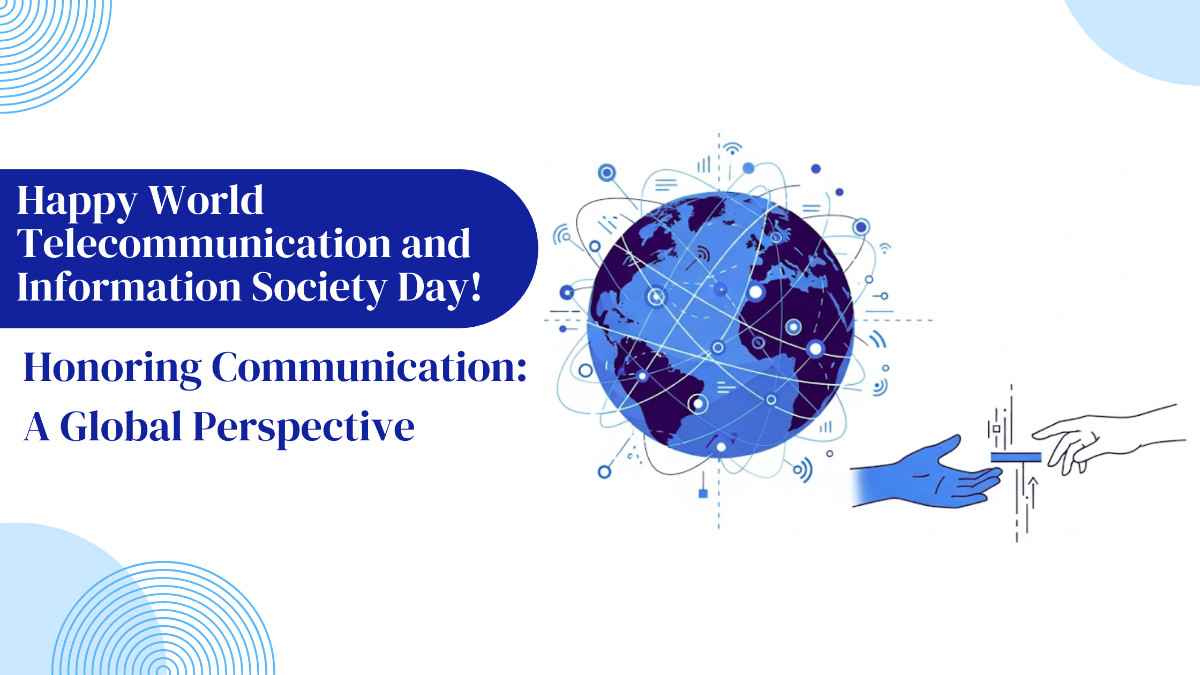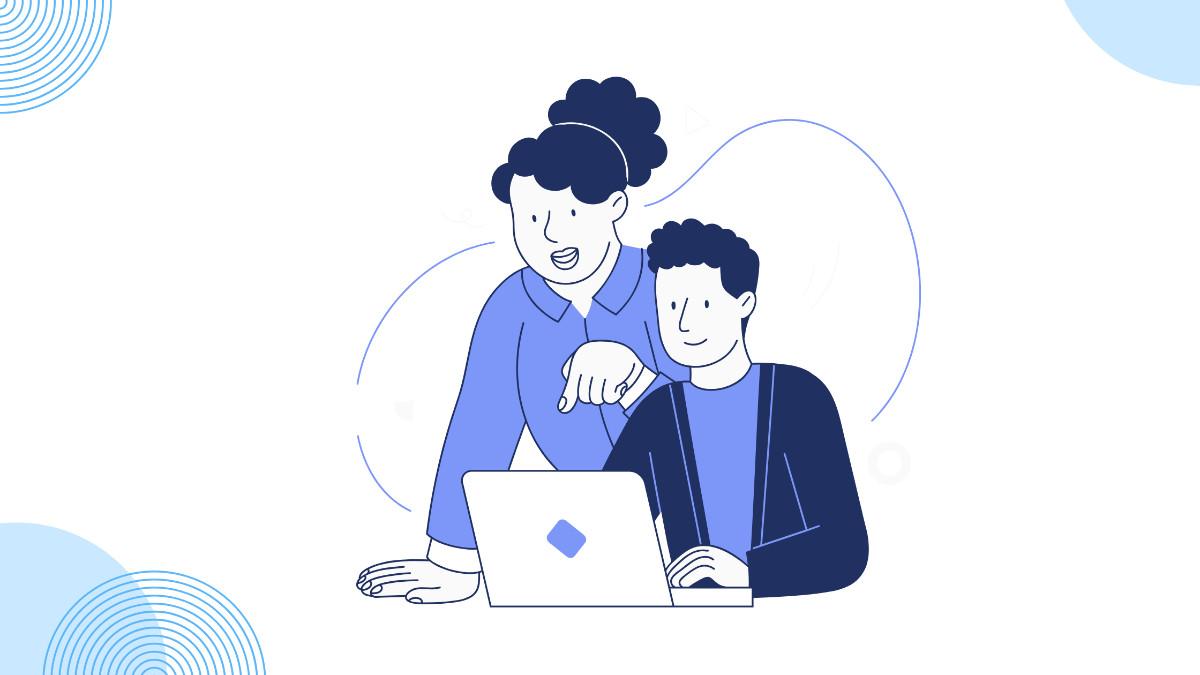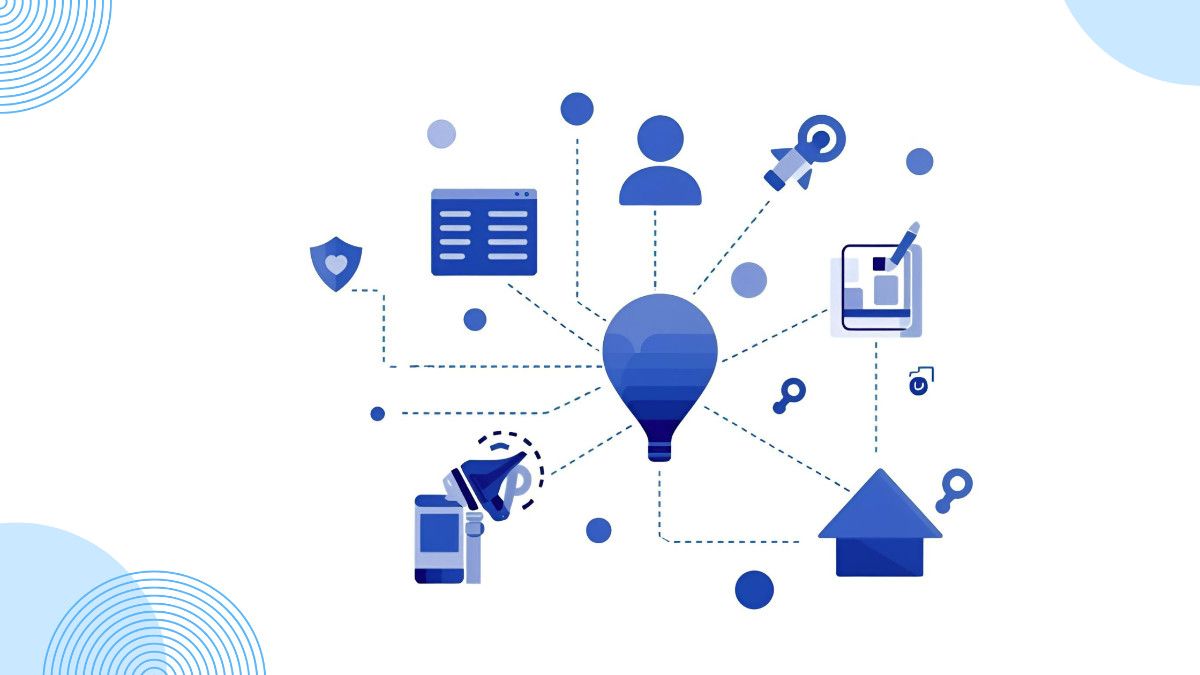World Telecommunication and Information Society Day 2025

Happy World Telecommunication and Information Society Day!
Today, we join the global community in celebrating the power of communication technologies to connect people and drive progress.
World Telecommunication and Information Society Day (WTISD) is celebrated annually on May 17th to raise awareness about the transformative power of communication and the influence of information and communication technologies (ICT) in our interconnected world.
This day was established by the International Telecommunication Union (ITU)-one of the world’s oldest international organizations-to commemorate the signing of the first International Telegraph Convention in 1865, which laid the foundation for global telecommunication. Over the years, WTISD has evolved to highlight not only the remarkable advancements in telecommunication technology and services, but also the importance of bridging the digital divide, promoting digital inclusion, and empowering sustainable development through digital innovation.
Understanding the Information Society
Information Society is a society in which information creation, dissemination, and utilization are central to economic, political, and cultural growth. In contrast to previous ages characterized by industry or agriculture, our time is characterized by access—access to information, knowledge, and digital services.
In a knowledge society, communication happens instantly, decision-making is data-driven, and opportunities are increasingly digital. But it’s not all about technology—it’s about people. It’s about making sure that all people, no matter what geography or background, can partake in the digital revolution.
Closing the divide between the digitally empowered and the excluded is the mission of World Telecommunication and Information Society Day. It calls us not only to mark progress, but to make intentionality out of inclusion.
It is the world we inhabit—and the world we have to create.
Digital Connections: Then and Now
The digital journey has been a whirlwind transformation from restricted, linear communication to borderless, real-time connectivity.
Then: The Early Days
Communication was dependent on landline telegraphs and phones.
Messages were slow, primarily one-way, and available only to privileged individuals.
“Being connected” was something physical—it relied on geography and infrastructure.
Now: The Connected Age
We are in the age of wireless networks, cloud platforms, and smart devices.
Communication is instant, interactive, and pervasive.
From video calls to smart homes, we’re not just connected—we’re constantly exchanging data across time zones, in real time.
The idea of connection has expanded from just people to devices, machines, and ecosystems—creating the Internet of Things (IoT).
Digital connection today is no longer just a convenience; it’s a critical enabler of equality, inclusion, and opportunity in both personal and professional life.
A Brief History of WTISD
- 1865 – The ITU came into being, and coordinated international telecommunication commenced.
- 1969 – May 17 was recognized globally as World Telecommunication Day.
- 2006 – The UN extended its scope, referring to it as World Telecommunication and Information Society Day, to cover the broader meanings of the information society.
Each year, the ITU provides a theme, inviting nations and organizations to reflect on how digital technology is shaping our world. In 2025, the theme is:
“Digital Innovation for Sustainable Development”
Why It Matters Today
Telecommunications have come so far from just voice communication; they are the backbone for education, business, healthcare, and democracy. Digital networks drive everything from weather prediction satellites to messaging applications that keep us in touch with one another over vast distances and are thus more critical than ever.
Following the COVID-19 pandemic, the digital divide was glaringly apparent. Those who had access to stable internet were able to easily shift into remote work and virtual learning settings, while millions did not have this access. This highlights the urgent necessity for inclusive, accessible, and substantive digital connectivity that can empower all, irrespective of where they are or what they have.
Telecommunications in the current era are not merely about more speed on the internet. They play a crucial role in driving sustainable development, mitigating pressing global issues such as climate change, inequality, and inaccessibility to basic services. Technologies of 5G, Artificial Intelligence (AI), and the Internet of Things (IoT) are powering innovation that generates new opportunities, promotes inclusivity, and enhances life on the planet.
In a global landscape where digital innovation is at the forefront of defining progress, the need for equal access to these technologies is more imperative than ever. We must close the digital divide and make sure that the transformative potential of connectivity benefits everyone, with equal opportunities for all, in education and economic growth.
The Shifting Patterns of Communication
Landline to Wireless
It began with fixed-line connections, but now it has come to lightning-speed wireless networks, like 5G, that can bring innovation and inclusion to the world—to the most distant of places.That transformation drives sustainable development by bringing digital connectivity to the most remote areas and empowering local communities.
From Broadcasting to Dialogue
Communication has shifted from broadcast to two-way exchange. Social networking sites, programs, and internet resources support individualized interaction, allowing comments and greater attachment across all areas of society—from commerce to education to politics.
From Infrastructure to Experience
It’s not only about being connected, but also about how we get connected. Immersive technologies, artificial intelligence, and online communities are reshaping our online existence. As we transition to a society of knowledge with inclusion as the core philosophy, the experience needs to become meaningful, available, and secure for everyone.
From Urban Focus to Global Inclusion
We are more and more committed to extending digital access to marginalized and rural communities. Access to information is now a human right, and the United Nations Sustainable Development Goals (SDGs) also emphasize equal access to the internet.
Building an Inclusive Information Society
A society in which information creation, distribution, and access are central to societal growth is an “Information Society.” But creating one depends on:
- Cost-effectiveness of devices and services
- Digital skills to use tools responsibly
- Content that’s culturally rich and respectful of local languages and culture
- Secure platforms that safeguard user data and instill confidence
These are not check boxes. They’re equity and empowerment pillars.
AlmaShines: Joining the Global Vision
While governments and telecommunication giants focus on infrastructure, digital platforms like AlmaShines act at the micro but significant level: enabling corporate organizations, associations, foundations, NGOs, and ex-employee communities to have rich, ongoing digital interactions and engagement.
In an era when connections are globalized and memories have a place on cloud servers, AlmaShines is a driver—making institutions remain relevant, human, and digitally connected.
Ways AlmaShines drives this global vision:
- Multi-channel messaging: Connect communities via push notifications, SMS, emails, and app messages.
- Personalization at scale: Ensure every member feels valued, no matter their location or when they joined.
- Smart engagement tools: Foster lasting interactions with online events and digital swag.
- Universal access: Designed to be compatible across devices and bandwidths, reaching members in both cities and remote areas.
By creating engaged communities, AlmaShines brings the WTISD 2025 theme—”Digital Innovation for Sustainable Development”—to life with every interaction.
Our Shared Future: Bridging Gaps, Building Bonds
As we celebrate World Telecommunication and Information Society Day 2025, let us not forget what connectivity is all about.
- Not faster internet only.
- Not flashier technology only.
- But equal opportunity, emotional connection, and global collaboration—no matter who we are, or where we are.
Together, with the right tools and vision, we can build an information society that not only empowers every individual but allows them to contribute effectively to it.
Last Thought
We’ve come a long way-from telegraphs to Twitter-but the journey toward a fully inclusive and sustainable digital world continues.
With every message exchanged, every portal opened, and every online community launched, we move closer to a future where everyone is connected and empowered.
“Each connection we make today shapes the possibilities of tomorrow.”
This World Telecommunication and Information Society Day, let’s do more than just celebrate-let’s take action.
Reach out to someone, share knowledge, support digital inclusion, or spark a conversation that bridges a gap. Together, we can turn connection into progress.
Happy WTISD-let’s make a difference today!
Frequently Asked Questions (FAQs)
- When is World Telecommunication & Information Society Day?
World Telecommunication & Information Society Day is celebrated annually on May 17. - When is World Telecommunication Day?
World Telecommunication Day, which is now combined with World Telecommunication & Information Society Day, is also celebrated on May 17 each year. - When is World Telecommunication & Information Society Day 2025?
World Telecommunication & Information Society Day in 2025 will be observed on May 17. - Why is World Telecommunication Day important?
World Telecommunication Day is important because it raises awareness about the crucial role that telecommunications and information technology play in connecting people globally. It also encourages governments, organizations, and individuals to understand the impact of these technologies on socio-economic development and to promote digital inclusion. - What is World Telecommunication Day (WTD)?
World Telecommunication Day, now part of World Telecommunication & Information Society Day, was established by the International Telecommunication Union (ITU) to commemorate the founding of the ITU and to focus on the role of telecommunications in global development. It emphasizes the significance of digital technologies in building a more connected, inclusive world.
Suggested Blogs
Let’s discuss the idea
Join hundreds of companies transforming their corporate communities with Almashines






